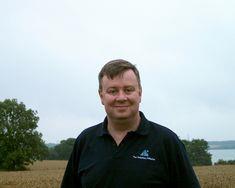
A small increase in the proportion of water samples exceeding 0.1 microgram per litre threshold for farm chemicals has been put down to a very wet autumn in 2004 combined with a change in number of sampling sites.
Figures from the Environment Agency (EA), which were reported in the Pesticides Forum report on pesticide indicators, showed that there was an overall failure rate of eight percent.
However, the VI points out that after excluding sample failures caused by the amenity weed killer diuron, the number of samples that exceeded the threshold was 6.62 percent in 2005 compared with 5.20 percent in the low year of 2004.
Voluntary Initiative manager Patrick Goldsworthy argued that high rainfall in the autumn of 2004 was the most likely culprit for the increase.
“What seems to have happened is that the very wet weather of autumn 2004 delayed pesticide applications until late in the year,” he explained. “So that the impact was not picked up until samples were taken in 2005. That had the effect of both deflating the 2004 results, and inflating the 2005 ones.
He added that the biggest increase was in failures caused by diuron, which is used by local authorities in the spring to kill weeds on paved areas and hard-standings, and is therefore particularly at risk of being washed off into drains.
Goldsworthy was keen to stress that farmers should proceed as normal. “There is absolutely no suggestion that farmers have become less careful or less responsible in the way they apply pesticides. Given the vagaries of our weather it is inevitable that there will be fluctuations from year to year. The really important thing is the long-term trend, and this is still downward, despite this setback.”
The VI pilot catchment project shows that significant improvements can be made by farmers working with agronomists and water companies, the VI stressed.
“In some catchments 98 per cent reductions were achieved in the number of days where exceedances occurred,” Goldsworthy explains. “This work is continuing, so as to consolidate on what has been achieved and make improvements in other catchments.”



No comments yet